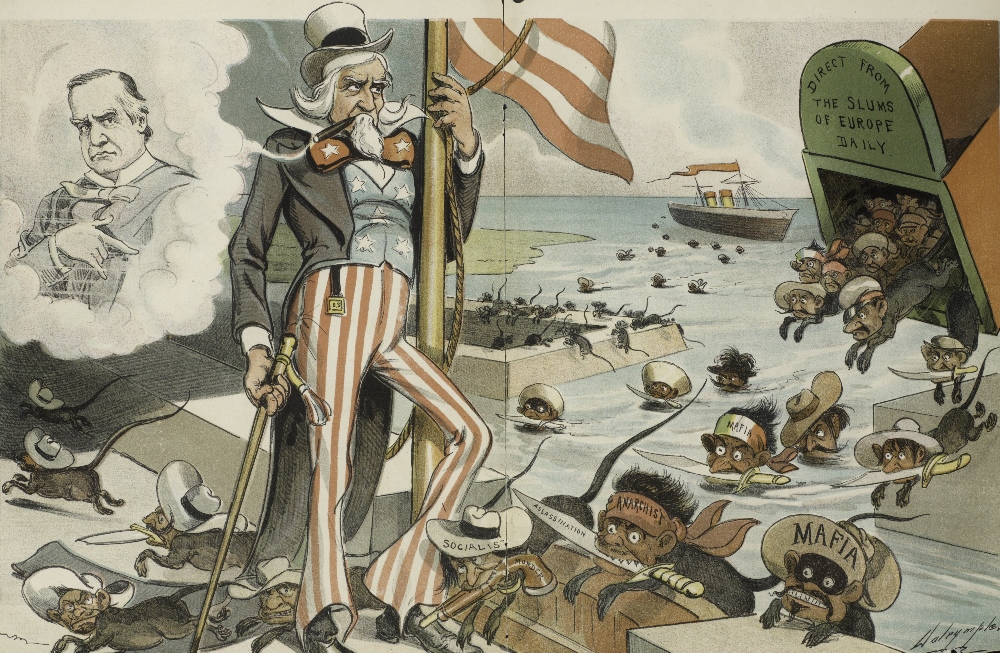
[This is the first of a two-part article.—Editors]
Immigration has been a “hot issue” in the United States for a long time. In the 1700s, Benjamin Franklin complained about the influx of German immigrants. In the mid-1800s, there was a strong nativist movement against European immigrants, especially Catholics and Jews. In the 1880s, it was the Chinese immigrants who were targeted and subjected to the Chinese Exclusion Act. They were too different in language and religion to become real Americans, and they took jobs away from others.
In the early 1900s immigrants from southern and eastern Europe were routinely accused of being terrorists and criminals. In the 1940s, Japanese families who had lived for years peacefully in West Coast communities and prospered alongside their U.S.-born neighbors were suddenly the “enemy” to be uprooted to detention camps.
The list of targeted immigrant populations is long. Various excuses were used to legitimize these anti-immigrant actions. Immigrants were dirty, disease-ridden and prone to crime, did not understand democracy, were not Christian, had dark skin. Immigrants would dilute the fabled purity of the white Christian American “race.” They would take jobs away from real American workers. They would overwhelm the capacity of our schools, institutions and social services. Immigrants were made into objects to fear. Underlying it were fundamental questions: What is America, but even more, Who is America? Is it a land of uniformity or a land of diversity and immigrants? The United States has always been a land of immigrants who were suspicious of immigrants.
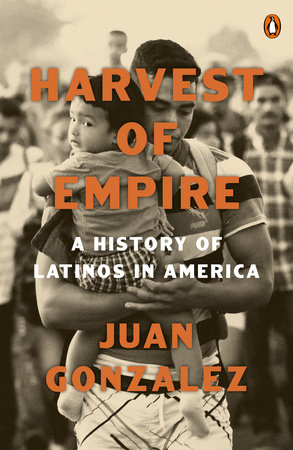
Harvest of Empire
The whole question of immigration was made so much more urgent when the United States began to assemble an empire of colonies in Latin America, following the Monroe Doctrine and the unabashed imperialism personified by President Teddy Roosevelt. In his book, Harvest of Empire, journalist and activist Juan Gonzalez describes in detail how the policies of the U.S. government over many years created the conditions in these U.S. colonies that encouraged or forced people to leave their countries and migrate to the U.S. from Mexico, Puerto Rico, Cuba, the Dominican Republic, Chile, Guatemala, El Salvador and Honduras, among others.
Each one of these has its own story of U.S. involvement. European empires created similar situations in Africa, South and East Asia, and parts of the Caribbean. In recent decades, the world has seen a “colonization in reverse,” in which people from former colonies emigrate to the centers of empire seeking relief from oppressive conditions at home (underdevelopment, dependency, repression). Jamaican poet Louise Bennett wrote about Jamaicans emigrating to England after 300 years of English colonization of Jamaica: “Jamaica people colonizing England in reverse.”

The waves of immigration from Latin America that arrive at the U.S. border are the harvest of our empire. This means that the policies of the United States toward those and other countries are intimately involved in creating conditions that force people to emigrate from those countries. For the United States immigration is both a domestic and a foreign policy issue. It is also a humanitarian issue that is politicized.
Politicized and Inhumane
Politicization is not a new phenomenon. It involves turning the migrant, the immigrant, the asylum seeker into a resource, an object, or a commodity to be used for political gain rather than a subject, a self-acting agent. Politicization ignores, trivializes, or uses the migrant’s own agenda to objectify the migrant and the act of migration for a political purpose. Politicization imposes definitions and identities on migrants, and may impute fictitious or distorted motives, characteristics and powers to migrants.
Governments, NGOs, international organizations, social institutions, and even migrants themselves can engage in politicization. Politicization manipulates migrant identities and the dualities of seeing the immigrant as either a victim or a threat, and immigration as either a matter of human rights and humanitarian concern or as a matter of geopolitical gain or loss.
Central to this process is the othering of the migrant, achieved through regimes of racial differentiation, ethnic identity, class distinctions, health status, religion, or the use of legal constructions such as citizenship. An array of both legitimate and fictional concerns have been employed to separate those considered worthy from those seen as unworthy. In particular, the criminalization of migrants (as lawbreakers) is a widespread tactic that often begins in the migrant’s homeland and continues through every successive step of the migrant’s journey.
The misleading term “illegal alien” is part of this criminalization. It is misleading because no human is illegal—illegality is created by specific laws and policies applied selectively to people. It is misleading because simply being in the U.S. without documents is not, de facto, a crime. It is misleading because many of those who arrive at the U.S. southern border are asylum seekers who, once they declare an intent to apply for asylum, are (according to international law) legally in the United States and cannot be deported back to the counties which they left until they have a hearing before an immigration court to decide their claim.
Typically, asylum seekers must wait months or years for a hearing. There are more than 700,000 asylum cases pending, and only a few hundred immigration judges to hear them. Meanwhile, the laws continue to change. The system is certainly backlogged, if not entirely chaotic and inhumane.
Today, immigration policy in the United States and other countries is shaped by the investment needs of the corporate world and the labor market, by a foreign policy that rewards allies and punishes or embarrasses adversaries, and by national and personal political aspirations and needs. It is not shaped to any significant degree by strictly humanitarian concerns that would highlight the humanity of migrants and disregard or downplay other considerations. This gives rise to political policies that deeply affect immigration and asylum regimes.
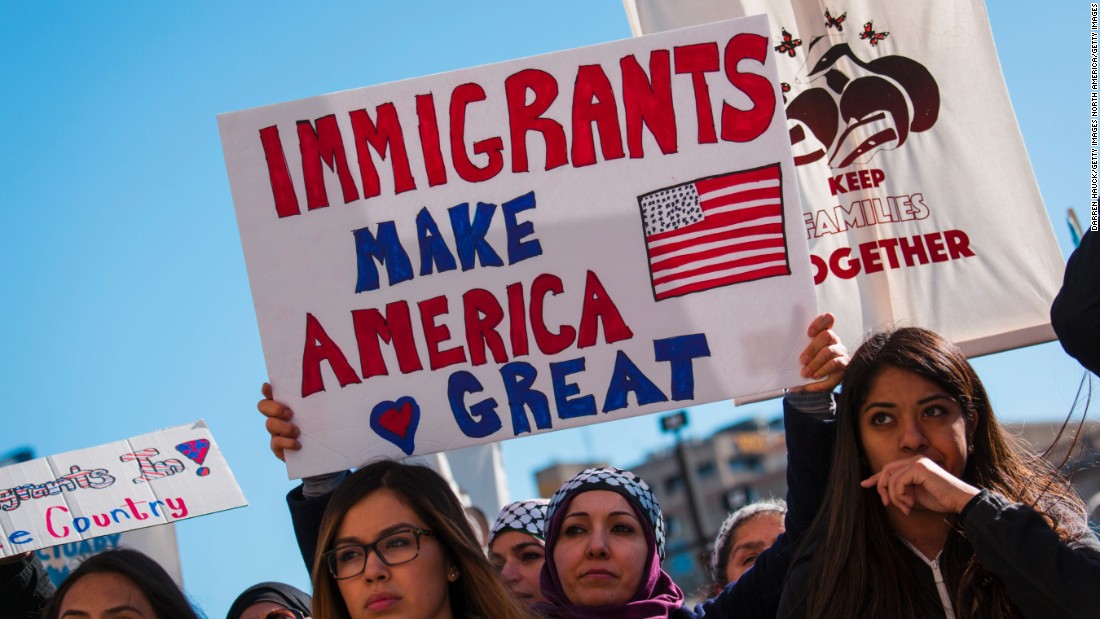
Labels such as “illegal” are broadly applied to rationalize what are often political purposes, while disregarding the legal status or humanity of migrants. Countries whose governments are implicated in corruption and serious violations of human rights are certified to receive foreign aid because they are deemed important political allies and friendly to foreign investment, even as emigration from these countries grows because of inhuman conditions.
Conversely, economic sanctions are applied to countries that are deemed adversaries, resulting in weakening economic conditions that can lead to massive emigration. It is one of the many contradictions of U.S. policy toward Latin America—sanctions weaken economies and create more emigrants even as “get-tough” policies militarize the U.S. southern border. These are policies that both create and exclude immigrants.
The Elusive “Root Causes”
Gang violence, poverty and corruption are often cited as the root causes of emigration from Central America to the U.S. But, in fact, these are often symptoms, secondary results of the actions especially of extractive corporations in foreign countries. In a country like Honduras, extractive industries like mining, logging and export agriculture find allies and promoters in government officials who both benefit financially and are also pressured by the U.S. government to allow relatively unregulated corporate activity.
Mining and other projects are carried out without the legally required approval of local communities that suffer environmental degradation and are displaced by a combination of environmental pollution and corporate threats, including the murder of local activists. Governments either actively support these displacements, often sending police or military to aid the corporations, or they simply allow corporations free reign.
Over a generation or two, this widespread displacement and destruction has produced wealth for corporations and a few local elites, and poverty and vulnerability for the children of the displaced who become ready targets for gang recruitment and violence. All sorts of criminal activities thrive in such an environment. Logging is big industry in parts of Central America, and it often becomes a useful cover for narcotics shipping routes, if the local population can be frightened into silence. Such conditions encourage individuals and families to flee for survival and safety. If the U.S. government had the will to call U.S. corporations to account for their dealings in foreign countries, at least some of these dire conditions would very likely improve.
Trump and Biden
Neither the Trump nor the Biden-Harris immigration policies has proven effective in reducing immigration and lessening its importance as a political issue. In part, this is because of the complexity of immigration, but it is also a reflection of the failure to make some difficult but necessary political decisions, to hold U.S. corporations and other actors to account.
In his prior term as president, Donald Trump relied heavily on exclusionary and punitive policies to reduce immigration along the U.S. southern border. He made much of building a physical wall and of using the threat and reality of family separation as a deterrent. He emphasized militarization of the border. He also tried to make neighboring countries responsible for dealing with undocumented immigrants, with policies such as requiring immigrants to apply in Mexico for the right to enter the U.S., and promoting a “safe third country policy” that would send asylum seekers from Central America back to other Central American countries that were declared “safe.”
This meant, for example, that a Guatemalan family that arrived in the U.S. seeking asylum from violence and poverty in Guatemala might be deported to Honduras for “resettlement,” despite the fact that Honduras was no safer than Guatemala. Some of these policies had their beginnings in previous U.S. administrations, but they have been adapted and applied with flagrant disregard for both law and humanity.
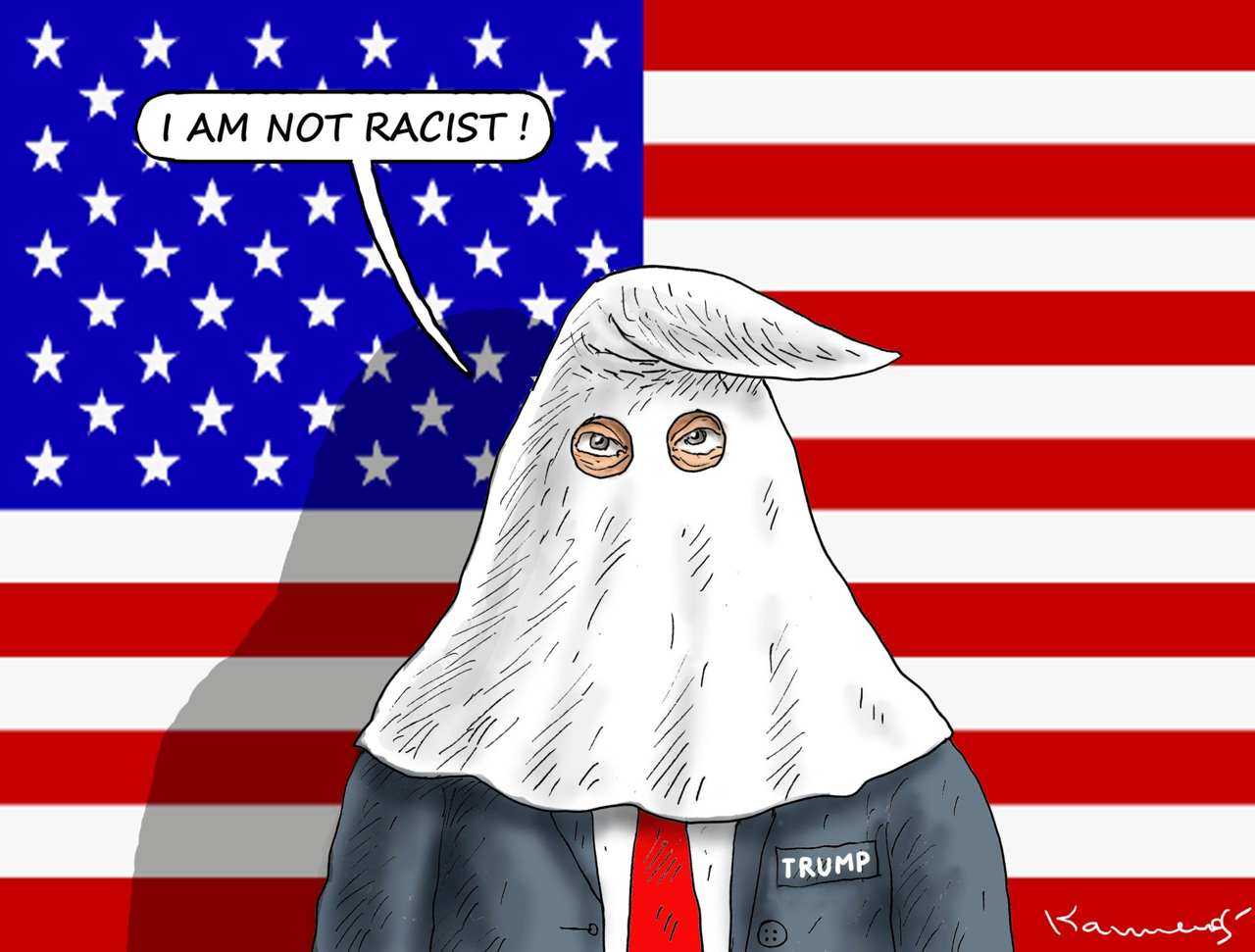
President Joe Biden made much of addressing the “root causes of immigration,” and emphasizing a different approach based on providing jobs and opportunities, and lessening corruption and gang violence, in areas such as Central America. But these, too, failed to address the problem of holding investors and U.S. corporations to account for their dealings abroad.
Instead, the Biden administration placed emphasis on investment by U.S. private and corporate investors to create jobs. This policy is fine as long as the corporations and investors that create the jobs are regulated so that local communities are the beneficiaries, not the victims. This would require significant political will. So far, nothing much has changed, either at the border or in the countries from which migrants flee.
In the end, Biden dealt with the political problem of immigration by continuing some of Trump’s exclusionary policies while trying to renew other, more inclusive ones such as promoting some narrow paths to residence and even citizenship for certain groups already in the U.S. By the time the Biden administration had taken office, Trump and his associates had already resurrected and exacerbated the old negative and fearful stereotypes of immigrants as a serious threat to U.S. security.
Biden could not afford to be seen, politically, as “soft” on immigration, meaning more willing to allow migrants and asylum seekers to access ways of entering and remaining in the U.S. Therefore, he agreed to sign a bi-partisan immigration bill that was up for a vote in Congress, a bill that was more restrictive than many wanted. But Republican Members of Congress reneged when Trump (who holds no official political office) opposed the bill. The immigration “crisis” was too important as a political weapon; actually resolving it could not be allowed.
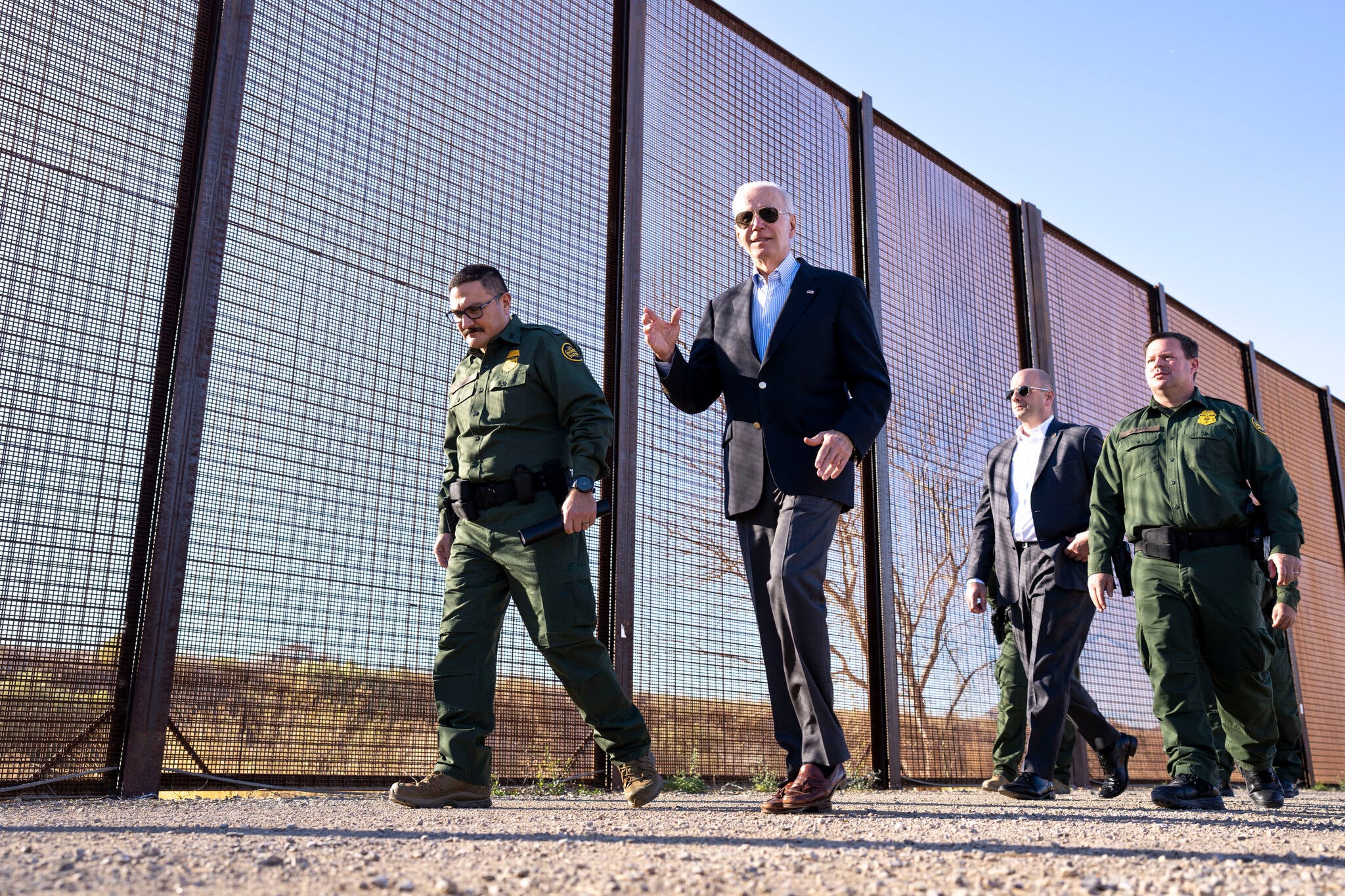
Project 2025: Embarrassing Questions
During the 2024 presidential campaign, Trump made immigration a central issue, with dire warnings about immigrants. His plans for his second term are already known, at least in broad outline. There are approximately 11 million undocumented people in the United States (not the 25 million of J.D. Vance’s fantasy). There will be a mass round-up of undocumented individuals. Federal and local law enforcement agencies will identify and detain the undocumented in large detention camps or centers. There will be mass deportations. U.S. citizens as individuals and groups that try to resist this will also risk being arrested and detained.
All of this raises questions that reveal the dangers and difficulties in carrying out this project. How exactly will undocumented individuals be identified? Will legally documented people, including U.S. citizens, be swept up in the deportations? Will neighbors inform on their neighbors? Will legally present asylum seekers be deprived of their legal right to remain in the U.S. awaiting a hearing? Will DACA (Dreamers) be detained? The Trump plan seems to begin with targeting undocumented individuals who have been convicted of criminal offenses or are considered terrorists or are already slated for deportation, but these designations are often slippery. To what extent will all of this depend on profiling? Will people with established families, businesses of their own, and children in school—people who have lived in the U.S. for many years and paid taxes—be detained and deported for having smoked and possessed a small amount of marijuana ten years ago and served jail time for it? (Deportations of such individuals have happened before in individual cases.)
How will the Trump administration convince state and local governments and law enforcement agencies to cooperate with identifying and detaining undocumented individuals, especially in states that have sanctuary or non-cooperation policies? Will families be separated if parents are undocumented while their children are native-born U.S. citizens? If so, what will become of the children when their parents are removed? How will the logistics of such massive detention and deportation be accomplished? The plan calls for large camps to be built, reportedly on land already identified for this purpose in Texas.
There are economic and political considerations. How much will it cost to pay all of the enforcement officers? What if bus and airline companies refuse to participate in transporting people to detention centers or deportation? (That has happened at least once before.) How much will the huge transport bill cost? How much will it cost to build large detention facilities? Who will pay for all this? What will be the economic effect of removing millions of workers from the U.S. economy? Will businesses resist having their cheap labor removed? Will consumers complain about rising prices and shortages due to a lack of workers?
If the Trump administration tries to deport people back to their home countries, will the governments of those countries accept them? How would that affect the economic, political and social stability of those countries? If they refuse to accept an influx of undocumented people, what will the Trump administration do with these detained people? What pressure or retaliation will Trump apply to countries that hesitate or refuse to accept deported individuals? Who will benefit politically and economically from all of this? Who will suffer most?
Finally, how will all this turmoil, force and the inevitable violation of basic rights damage the institutions and values of the United States that has for its entire history been both a refuge for immigrants and a country of immigrants? How will all of this change the moral identity of the United States and its people? Has it already changed?

CovertAction Magazine is made possible by subscriptions, orders and donations from readers like you.
Blow the Whistle on U.S. Imperialism
Click the whistle and donate
When you donate to CovertAction Magazine, you are supporting investigative journalism. Your contributions go directly to supporting the development, production, editing, and dissemination of the Magazine.
CovertAction Magazine does not receive corporate or government sponsorship. Yet, we hold a steadfast commitment to providing compensation for writers, editorial and technical support. Your support helps facilitate this compensation as well as increase the caliber of this work.
Please make a donation by clicking on the donate logo above and enter the amount and your credit or debit card information.
CovertAction Institute, Inc. (CAI) is a 501(c)(3) non-profit organization and your gift is tax-deductible for federal income purposes. CAI’s tax-exempt ID number is 87-2461683.
We sincerely thank you for your support.
Disclaimer: The contents of this article are the sole responsibility of the author(s). CovertAction Institute, Inc. (CAI), including its Board of Directors (BD), Editorial Board (EB), Advisory Board (AB), staff, volunteers and its projects (including CovertAction Magazine) are not responsible for any inaccurate or incorrect statement in this article. This article also does not necessarily represent the views the BD, the EB, the AB, staff, volunteers, or any members of its projects.
Differing viewpoints: CAM publishes articles with differing viewpoints in an effort to nurture vibrant debate and thoughtful critical analysis. Feel free to comment on the articles in the comment section and/or send your letters to the Editors, which we will publish in the Letters column.
Copyrighted Material: This web site may contain copyrighted material the use of which has not always been specifically authorized by the copyright owner. As a not-for-profit charitable organization incorporated in the State of New York, we are making such material available in an effort to advance the understanding of humanity’s problems and hopefully to help find solutions for those problems. We believe this constitutes a ‘fair use’ of any such copyrighted material as provided for in section 107 of the US Copyright Law. You can read more about ‘fair use’ and US Copyright Law at the Legal Information Institute of Cornell Law School.
Republishing: CovertAction Magazine (CAM) grants permission to cross-post CAM articles on not-for-profit community internet sites as long as the source is acknowledged together with a hyperlink to the original CovertAction Magazine article. Also, kindly let us know at info@CovertActionMagazine.com. For publication of CAM articles in print or other forms including commercial internet sites, contact: info@CovertActionMagazine.com.
By using this site, you agree to these terms above.
About the Author

James Phillips is a cultural and political anthropologist with forty years as a student of Central America.
His major concerns are movements of social change, political conflict, human rights, colonialism, and immigrant and refugee populations.
He is the author of articles and book chapters on Honduras and Nicaragua. His most recent book is Extracting Honduras: Resource Exploitation, Displacement, and Forced Migration (Lexington Books, 2022).
James can be reached at phillipsj@sou.edu.

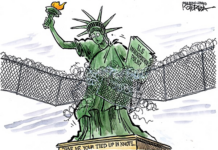

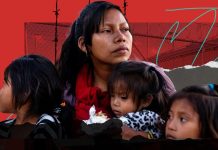

My impression of Donald Trump is that he likes anyone who votes for him. But most immigrants prefer the Democrats over the Republicans. Also many immigrants have escaped authoritarian regimes in Latin American, so they may be uncomfortable with the Republicans who are very Authoritarian, especially nowadays. Donald Trump wants to create an America where everyone is loyal to him and he does not think he can get this loyalty from immigrants.